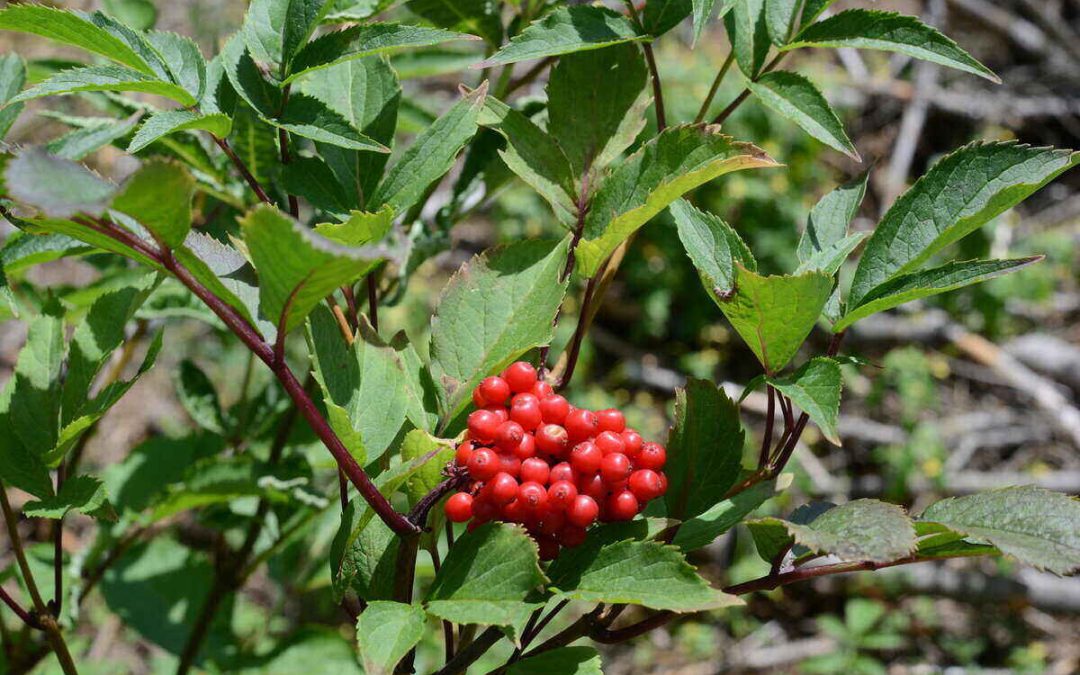The best thing about living in the “verdant forest green, caressed by silv’ry stream”? Its abundance of native plants that will not only make your Pacific Northwest landscape pop but will also contribute to an overall healthier ecosystem. To help you select the best flowers, shrubs, and trees for your yard, we’ve rounded up 12 of the best native plants for Western Washington.
In this article, we’ll cover:
- 12 Native Plants for Your Western Washington Yard
- FAQ About Native Western Washington Plants
- When to Hire a Professional
12 Best Native Plants for Western Washington
1. Western Columbine (Aquilegia formosa)
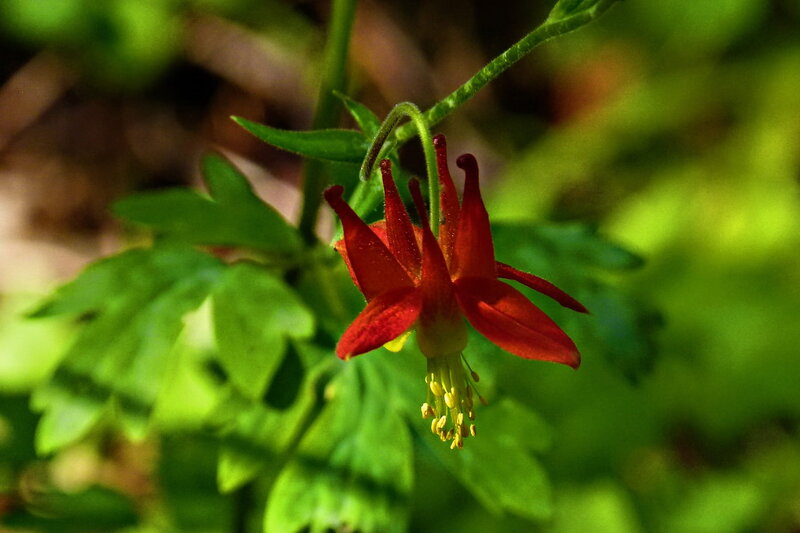
Photo Credit: PxFuel
This perennial, which is also known by another common name, sitka columbine, blooms from late spring to early summer and has eye-catching, downward-facing, red and yellow flowers. The only type of columbine to grow in these parts, this native wildflower is easy to care for, thriving in both shade and sun, as long as temps are cool and the ground is moist. Plant under trees or in open areas, and watch as hummingbirds, bees, and butterflies flock to it. Western columbine is resistant to deer and rabbits but can be susceptible to leaf miner.
Plant type: Flower
USDA hardiness zone: 3 to 9
Sun: Full sun or partial shade (preferably)
Soil: Chalky, clay, loamy, or sandy soil that’s well-drained and nutrient-rich
Duration: Perennial
Bloom Time: Late spring to early summer
Water needs: Average; weekly or whenever top layers of soil are dry
Mature height: 1 to 3 feet
Foliage: Deciduous; blue-green leaves grow in groups of three, resemble fern leaves
Potential Hazards: Contain toxin that can cause stomach issues or heart palpitations; however, small amounts have been used to treat illnesses and clean hair for centuries
Maintenance: Low; deadhead fading blooms and cut back in mid-summer
2. Pacific Bleeding Heart (Dicentra formosa)
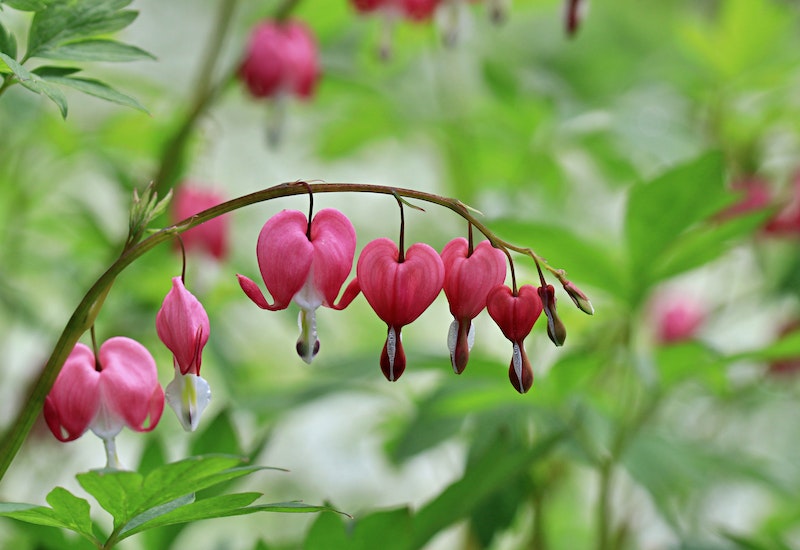
Photo Credit: Pexels
Hanging in clusters of two to 30 flowers from leafless stems supported by a base of fern-like foliage, Pacific bleeding hearts produce pinkish-purple, heart-shaped blooms. Best as a groundcover underneath trees like vine maples or as an accent plant in shade gardens, this perennial pairs well with plants like Western columbine and evergreen huckleberry. Its nectar-rich flowers also attract pollinators, including hummingbirds and bumblebees.
Plant type: Flower
USDA hardiness zone: 3 to 9
Sun: Full sun or partial shade; tolerates full shade, but less flowers will bloom
Soil: Moist, well-drained, humus-rich
Duration: Perennial
Bloom time: Early spring to early summer; may rebloom in fall
Water needs: Low to medium
Mature height: 1 to 2 feet
Foliage: Deciduous and fern-like with blue-green color; grow at base of plant, not on stems
Potential hazards: Ingestion may upset stomach; leaves may irritate skin
Maintenance: Low; resistant to diseases, pests, deer, and rabbits
3. Tall Oregon Grape (Mahonia aquifolium)
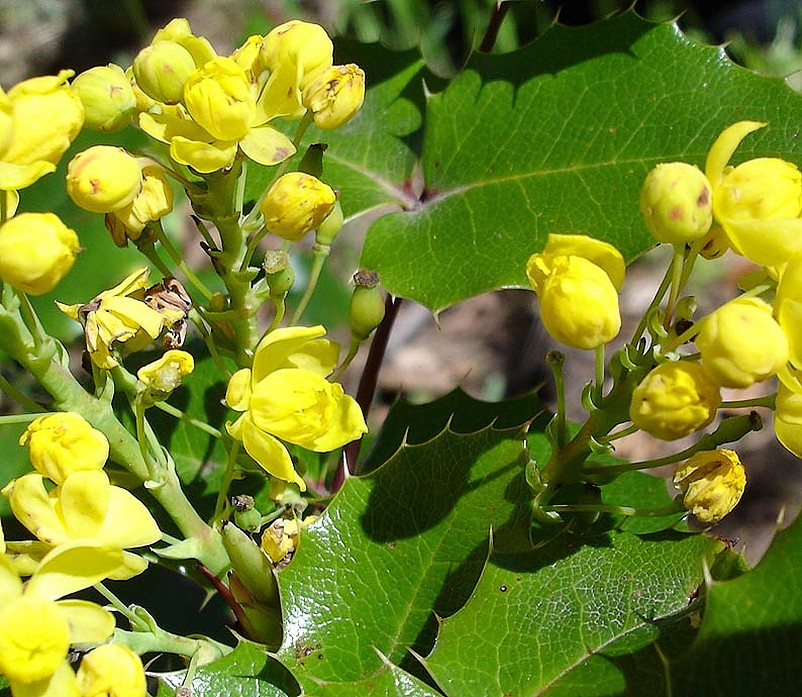
Photo Credit: Jeantosti / Wikimedia Commons / CC BY-SA 3.0
Giving multi-seasonal interest — in spring, this evergreen shrub offers copper-hued leaves, followed by glossy green ones in summer and bronze-purple ones by fall — tall Oregon grape also bears bunches of blue berries in summer that resemble grapes, hence the name. These berries not only make a tasty treat for birds, but people can also enjoy them as a jelly. Perfect for use as a natural privacy screen, this plant is also known for its springtime yellow flowers.
Plant type: Shrub
USDA hardiness zone: 5 to 8
Sun: Partial shade to full shade
Soil: Loamy, acidic, well-drained
Duration: Perennial
Fragrance: Light honey scent
Bloom time: Late winter to early spring
Water needs: Low to medium
Mature height: 6 to 8 feet
Foliage: Evergreen; shiny look and tough to the touch
Maintenance: Low; drought-tolerant, but look out for leaf scorch, scale, aphids, and whiteflies
4. Red Flowering Currant (Ribes sanguineum)
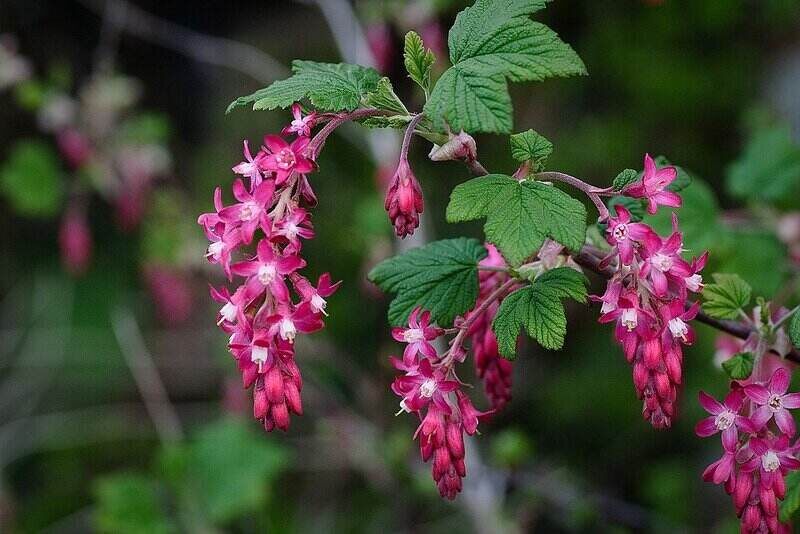
Photo Credit: Mark Robinson / Wikimedia Commons / CC BY 2.0
Perfect as an aromatic privacy screen, this native choice can also help with erosion control when planted on sloped terrain. Hummingbirds, bees, butterflies, and other pollinators are attracted to its nectar and deep blue-purple berries.
Very low-maintenance, this shrub enjoys well-drained soil in full sun or partial shade and doesn’t require much water. Plant alongside Douglas firs, vine maples, oceanspray, mock orange, serviceberry, or other native species.
Plant type: Shrub
USDA Hardiness Zone: 6 to 8
Sun: Full sun or partial shade
Soil: Clay, sandy, loamy; well-drained and moist to occasionally dry
Duration: Perennial
Fragrance: Light, fruity scent from flowers; leaves smell of sage
Bloom time: Early spring to summer
Water needs: Low; drought-resistant
Mature height: 3 to 9 feet
Foliage: Deciduous
Maintenance: Low
5. Serviceberry (Amelanchier alnifolia)
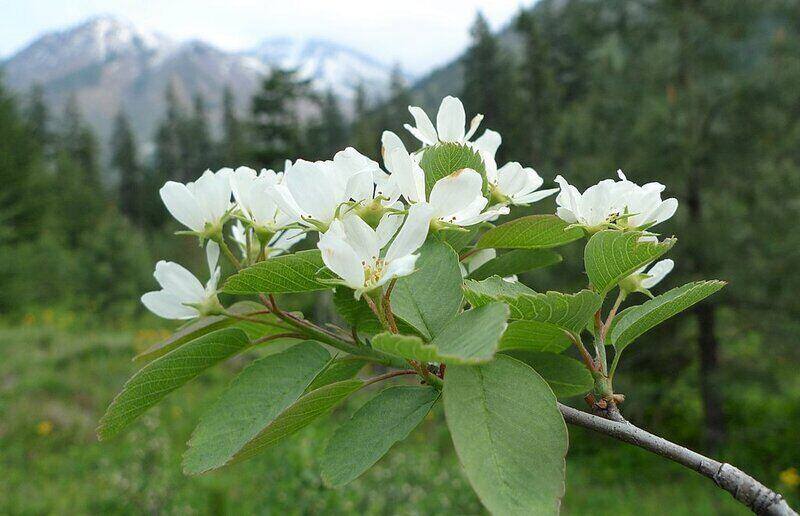
Photo Credit: Thayne Tuason / Wikimedia Commons / CC BY-SA 4.0
Flaunting its fragrant white, star-shaped flowers for as long as a month in spring, this deciduous shrub also bears dark blue berries in summer that look more like mini apples. Several species of birds flock to this plant for its fruit.
Serviceberry also has showy yellow leaves in fall, spreads quickly via rhizomes during its growing season, and is great for erosion control. No matter what other common name you call it — Saskatoon serviceberry, Western serviceberry, Juneberry, or pigeon berry — this native plant will remain gorgeous year-round.
Plant type: Shrub
USDA hardiness zone: 4 to 9
Sun: Full sun or partial shade
Soil: Loamy or sandy; well-drained
Duration: Perennial
Fragrance: Lightly scented
Bloom Time: Spring and summer
Water needs: Low
Mature height: 3 to 16 feet
Foliage: Deciduous
Maintenance: Low
6. Vine Maple (Acer circinatum)
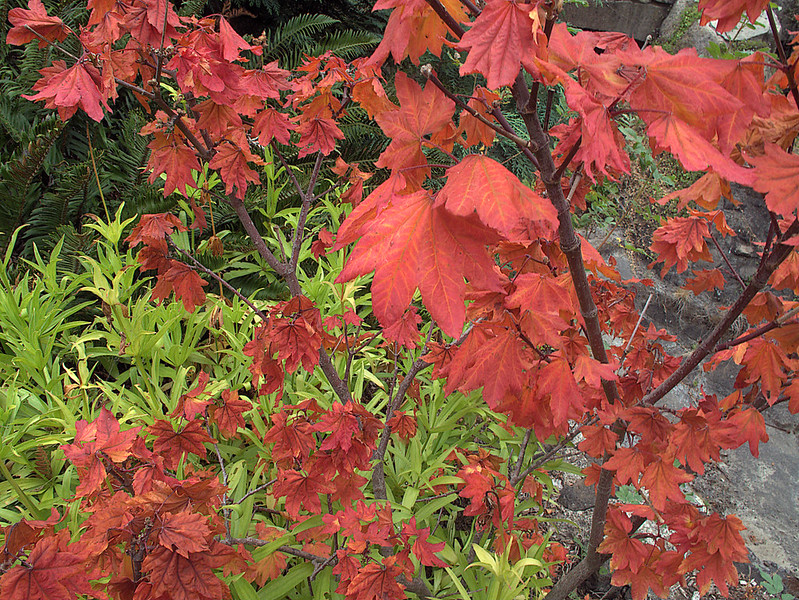
Photo Credit: John Rusk / Flickr / CC BY 2.0
Because of its smaller size and stunning multi-seasonal color changes, vine maples are a popular choice for Pacific Northwest landscape designs — the perfect native alternative to the Japanese maple. Watch small, red flowers emerge in spring, giving way to red and gold leaves and burgundy-colored fruit in fall. This plant is most often used as a border or specimen tree and attracts a variety of pollinators.
Plant type: Small tree or shrub
USDA hardiness zone: 5 to 9
Sun: Full sun, full shade, or partial shade
Soil: Loamy, sandy, or clay; moist and well-drained
Duration: Perennial
Bloom Time: Early spring to early summer
Water needs: Low to Medium
Mature height: 15 to 30 feet, sometimes reaching 40 feet
Foliage: Deciduous; green in spring and turn orange/red in fall
Maintenance: Low; prune to desired shape
7. Common Camas (Camassia quamash)
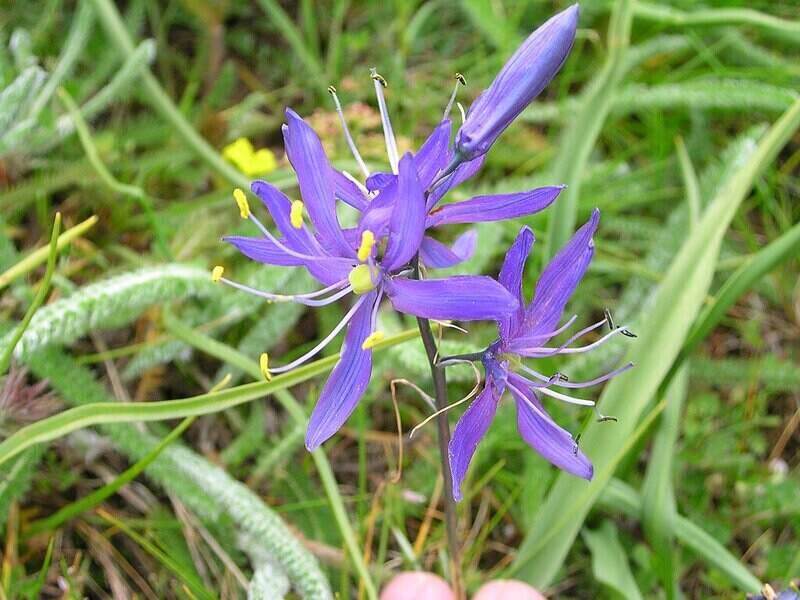
Photo Credit: brewbooks / Wikimedia Commons / CC BY-SA 2.0
Said to be “discovered” by Lewis and Clark, this native wildflower is known for its striking violet blooms and green, grass-like leaves. A member of the lily family, common camas is a choice pick for rock gardens, groundcover or ornamental plantings, flower beds, or cut flowers to decorate your home.
It’s low-maintenance, too, and experts recommend allowing it to dry out a bit in summer to help ward off fungi. Pollinators are attracted to this plant, but so are deer, so keep a look out for them.
Plant type: Flower
USDA hardiness zone: 4 to 8
Sun: Full sun or partial shade
Soil: Clay, silt
Duration: Perennial
Fragrance: Spicy scent
Bloom Time: Early spring to early summer
Water needs: Medium
Mature height: Up to 2 feet
Foliage: Green, grass-like leaves
Maintenance: Low
8. Pacific Dogwood (Cornus nuttallii)
For centuries, the sturdy wood of this deciduous tree has been used to make bows and arrows, tools, and even piano keys. It can withstand everything from flooding to some drought to deer and elk feedings and is an effective type of natural erosion control.
Displaying large, white flowers in spring and red berries with pink leaves in autumn, Pacific dogwood plays host to all sorts of pollinators. As it’s susceptible to dogwood anthracnose, a fungal disease, treat as necessary.
Plant type: Shrub or tree
USDA hardiness zone: 7 to 9
Sun: Full sun or partial shade
Soil: Moist and well-drained clay soil; high organic matter
Duration: Perennial
Bloom Time: Early spring to early summer; may rebloom in late summer
Water needs: Medium; water weekly, more often in summer
Mature height: 6 to 66 feet
Foliage: Deciduous; oval, green leaves in spring/summer, pink leaves in fall
Maintenance: Low
9. Western Starflower (Lysimachia latifolia)
To add a naturalized look and feel to your property, consider planting a groundcover such as this underneath a canopy of native trees like Douglas Firs. Its small, star-shaped, white or pink flowers provide tiny pops of color against the whorled green leaves they spring from. Also ideal for a shade garden, Western Starflower is self-seeding and resistant to pests and diseases.
Plant type: Flower
USDA hardiness zone: 3 to 7
Sun: Full shade or partial shade
Soil: Well-drained, acidic, sandy
Duration: Perennial
Bloom Time: Early spring to midsummer
Water needs: Low
Mature height: 4 to 10 inches
Foliage: Green leaves grow in a whorl of four to five leaves
Maintenance: Low
10. Salal (Gaultheria shallon)
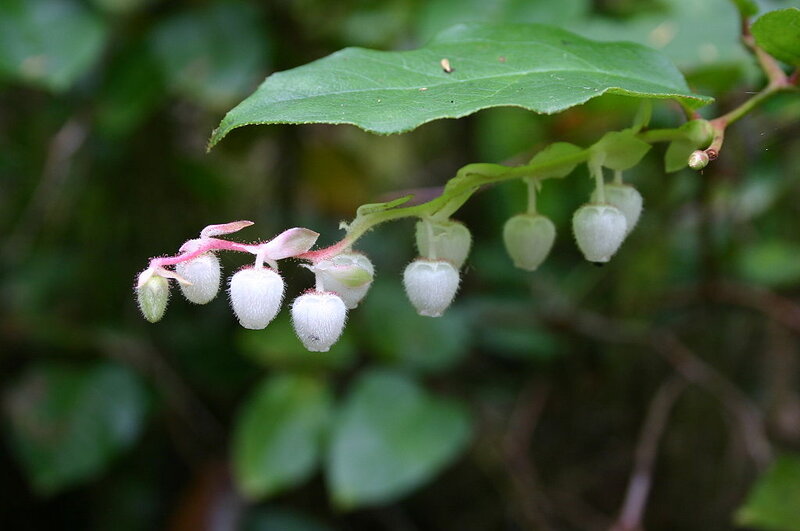
Photo Credit: Wing-Chi Poon / Wikimedia Commons / CC BY-SA 2.5
Salal works well as pathway border plantings, in shade gardens, and as decorative cut flowers. Characterized by its pendant-like white or pink blooms and dark, blue-purple berries (they’re edible!), this evergreen shrub spreads by rhizomes and gives off a wintergreen scent. While this plant is considered low-maintenance, it can be susceptible to brown spot and anthracnose.
Plant type: Shrub
USDA hardiness zone: 5 to 9
Sun: Full shade or partial shade
Soil: Moist, acidic, sandy, well-drained
Duration: Perennial
Fragrance: Wintergreen scent
Bloom Time: Spring to summer
Water needs: Medium
Mature height: 3 to 5 feet
Foliage: Evergreen; thick and waxy feel
Maintenance: Low
11. Lewis’ Mock Orange (Philadelphus lewisii)
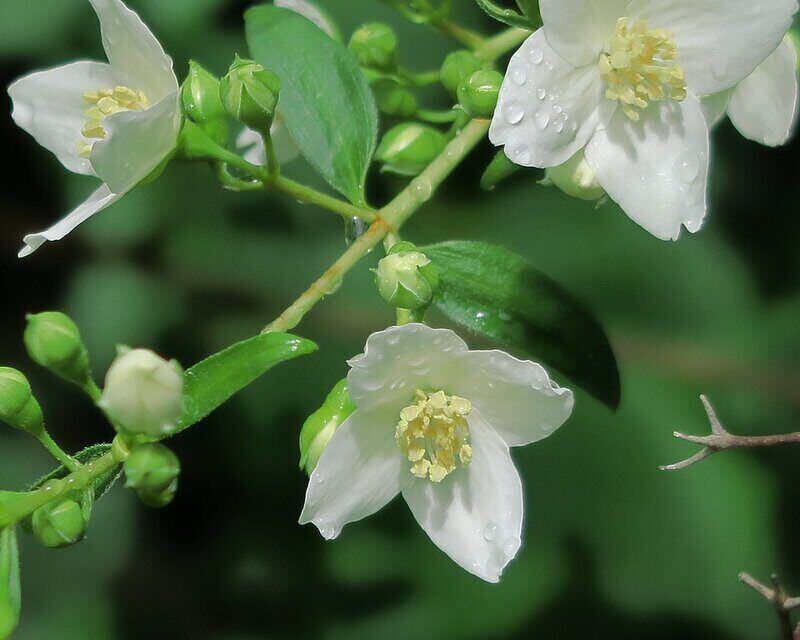
Photo Credit: John Rusk / Wikimedia Commons / CC BY 2.0
Named for Meriwether Lewis of the famed Lewis and Clark duo, this ornamental shrub attracts pollinators and people alike with its citrusy, orange scent and showy, white flowers. Other hues of interest include its deciduous green leaves that turn yellow in fall and its reddish-brown bark that grays with age. Growing up to 9 feet tall, Lewis’ Mock Orange is easy to care for; just prune old stems as needed. This native plant is also resistant to deer and drought.
Plant type: Shrub
USDA hardiness zone: 5 to 8
Sun: Full sun or partial shade
Soil: Rocky, nutrient-rich, and well-drained
Duration: Perennial
Fragrance: Sweet, orangey, citrus scent
Bloom Time: Early spring to summer
Water needs: Medium; water in the absence of rain
Mature height: 4.5 to 9 feet
Foliage: Deciduous; green, oval-shaped leaves in spring/summer, turning yellow in fall
Maintenance: Low; prune old stems to encourage new growth
12. Red Elderberry (Sambucus racemosa)
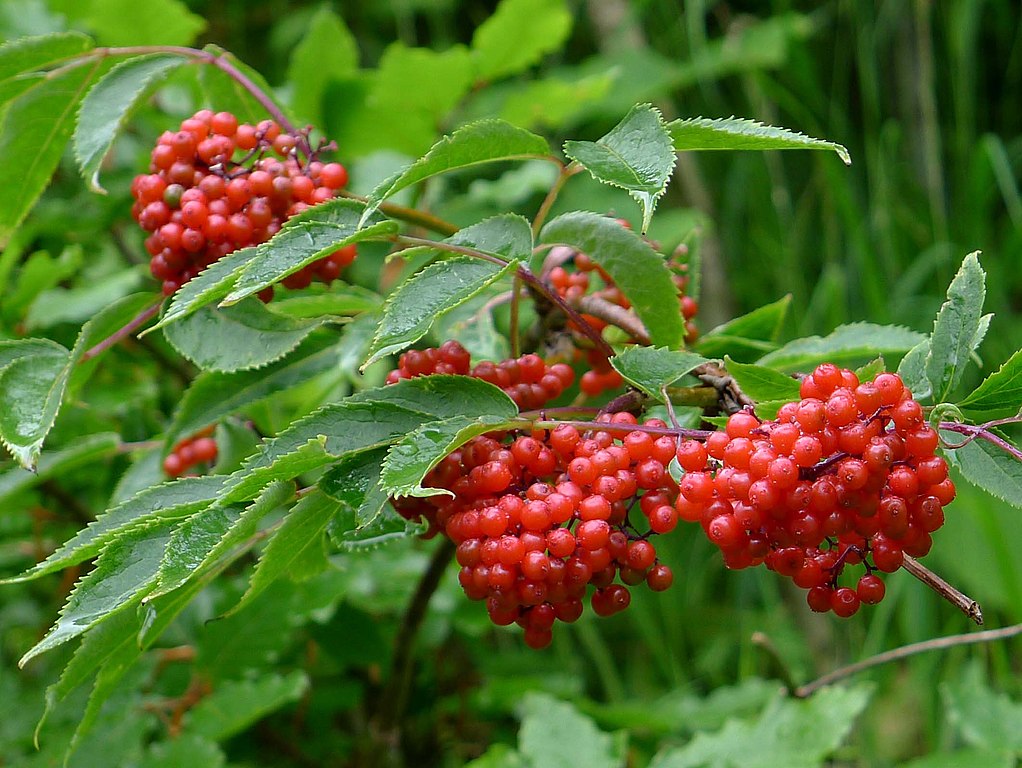
Photo Credit: gailhampshire / Wikimedia Commons / CC BY 2.0
A statement-making shrub known for its pyramid-shaped clusters of white, floral-scented blooms and bundles of red berries, this native plant is easy to grow and has been used medicinally for centuries. Be careful, as it can become weedy, so prune as needed to contain its spread.
Great for natural erosion control, make sure you don’t plant this shrub near taller native trees, as they can block needed sunlight and stunt growth. Like other native plants, red elderberry also attracts its share of pollinators, including birds, butterflies, and bees.
Plant type: Shrub
USDA hardiness zone: 3 to 7
Sun: Full sun or partial shade
Soil: Moist, well-drained soil
Duration: Perennial
Fragrance: Flowers have floral scent; leaves have unpleasant, stinky odor when crushed
Bloom Time: Spring and summer
Water needs: Medium; water well in the absence of rain
Mature height: 3 to 9 feet
Foliage: Dark green with serrated edges and hairy underside
Potential hazards: Seeds are poisonous; raw berries are toxic
Maintenance: Medium; prune to contain spread
How to Choose Native Plants for Your Western Washington Yard
First, examine your yard’s soil and sun conditions, existing vegetation, utility line placement, and the amount of space available for planting around your home, driveway, and other structures.
Once you’ve familiarized yourself with all of that, research which native plants thrive best in your conditions. Then comes the fun part: finding inspiration. Peruse official county and regional planting guides or visit sites like Bellevue Botanical Garden or Olympic Sculpture park. Armed with a bevy of ideas, you’ll be ready to shop for your native plant picks.
Covering USDA hardiness zones 8 and 9, Western Washington’s climate is milder than its cousin on the other side of the Cascades. Summers average highs just below 80 degrees Fahrenheit, while winters hover around highs in the mid-40s and lows in the 20s — all of which native plants are naturally accustomed to.
In addition to the native plants already mentioned previously, a few more planting options include (but are not limited to):
- creeping Oregon grape (mahonia nervosa)
- red bearberry (arctostaphylos uva-ursi)
- red alder (alnus rubra)
- Western hemlock (tsuga heterophylla)
- Western red cedar (thuja plicata)
- Pacific ninebark (physocarpus capitatus)
- oceanspray (holodiscus discolor)
FAQ About Native Western Washington Plants
1. When should I plant native flowers and shrubs in Western Washington?
The best time to plant natives in our part of the state is fall. Be sure to provide about 2 inches of mulch to protect the roots of new plants and water when dry until they’re established. Of course, always double check the preferred conditions of native plants before including them in your landscape.
2. What are the benefits of growing native plants?
There are many advantages of planting species indigenous to our area, including:
- Preserving biodiversity
- Conserving water, as these plants have a deep root system and need less supplemental watering once established
- Cutting back on pesticide use, as natives are pretty resistant to pests/diseases
- Supplying food/shelter for pollinators and other wildlife
- Controlling erosion and preventing stormwater runoff
3. What plants are native to Seattle?
Seattle’s native plants include:
- Pacific Bleeding Heart
- Tall Oregon Grape
- Vine Maple
- Wild Ginger
- Salal
- Common Camas
- Evergreen Huckleberry
- Red Flowering Currant
4. What plants are native to Tacoma?
Tacoma’s native plants include:
- Wild Ginger
- Tall Oregon Grape
- Common Camas
- Vine Maple
- Red Flowering Currant
- Lewis’ Mock Orange
- Nootka Rose
- Pacific Red Elderberry
5. What plants are native to Eastern Washington?
Eastern Washington’s native plants include:
- Common Yarrow
- Saskatoon Serviceberry
- Douglas Fir
- Sagebrush
- Lewis’ Mock Orange
- Showy Phlox
- Western Aster
- Velvet Lupine
- Red Bearberry
Where to Find Native Plants in Western Washington
With several local garden shops stocked and ready with native plants (there are 2,300+ in all of Washington state!), it’s easy to find the ones you’re looking for. Be sure to check out the Washington Native Plant Society to get a head’s up on when certain shops near you will begin their sales.
Post-purchase, you can get even more expert help with maintaining your landscape. Need to hire a lawn care pro near you? We have trusted lawn care professionals in Seattle, Tacoma, and many other cities throughout the state.
Main Photo By: Joost J. Bakker IJmuiden / Flickr / CC BY 2.0

